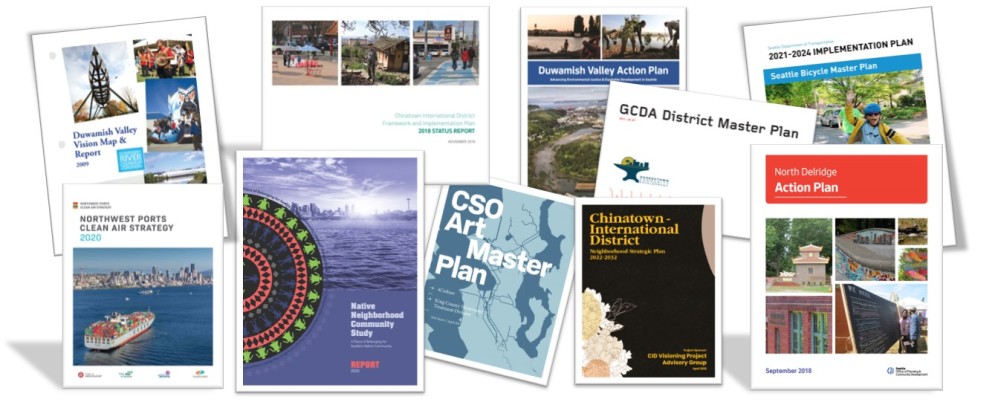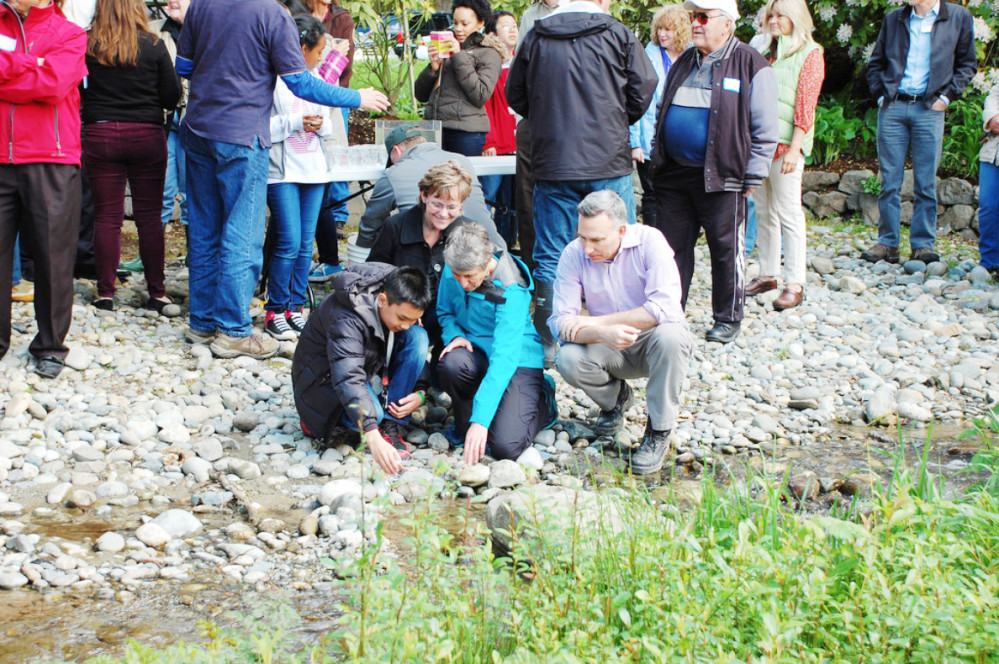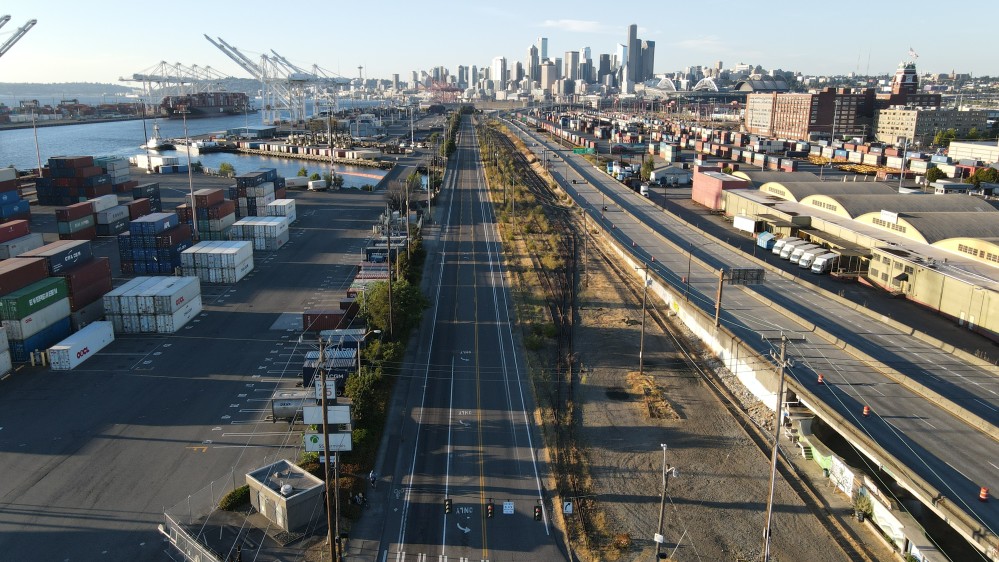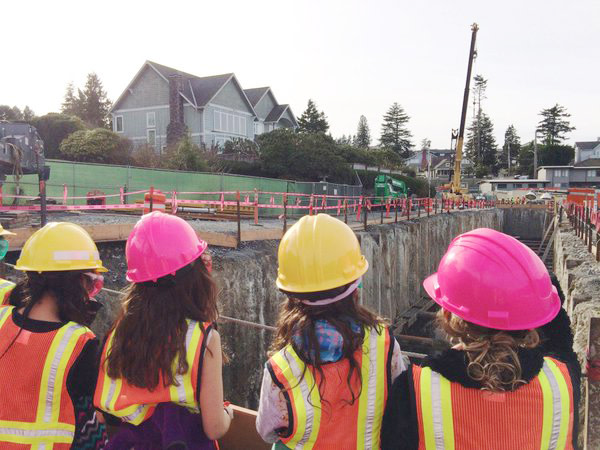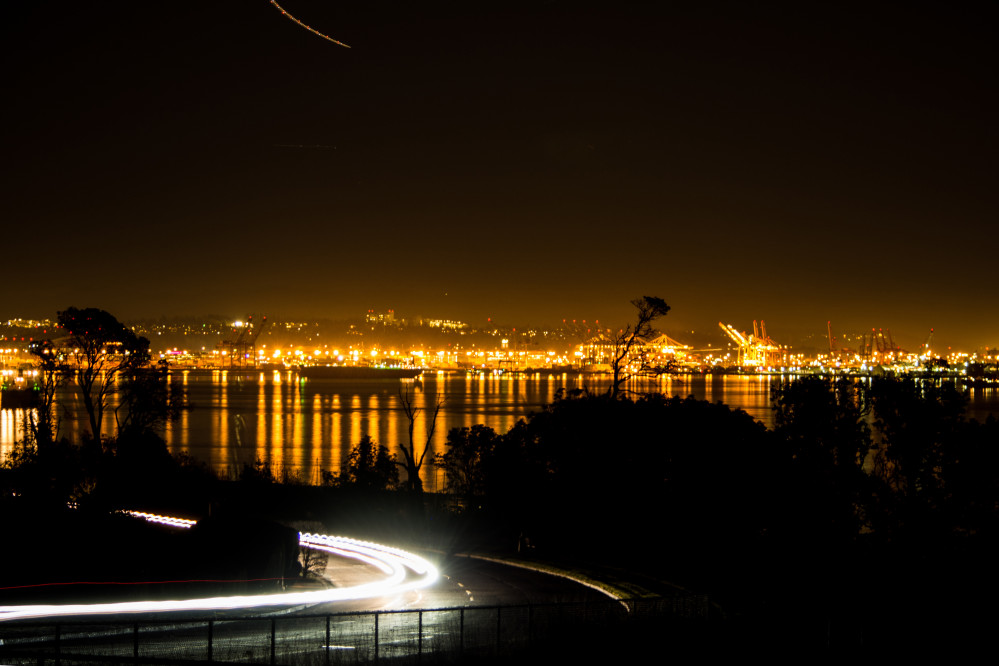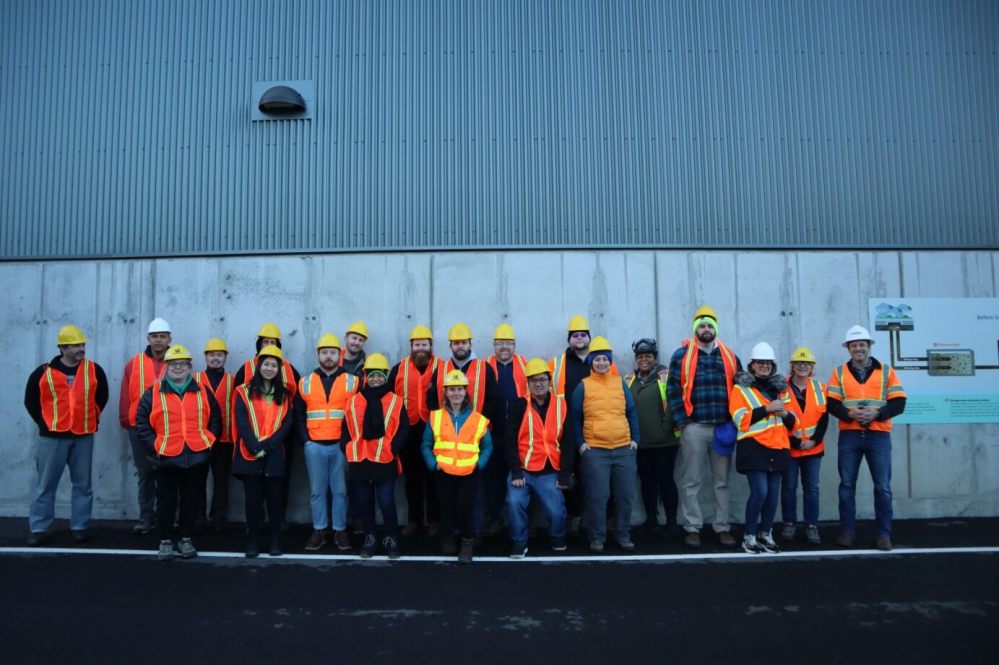Mouth of Duwamish Wet Weather Facilities - Online Open House and Survey
Mouth of Duwamish Wet Weather Facilities - Online Open House and Survey
King County Wastewater Treatment Division is progressing plans to control pollution from five combined sewer overflow (CSO) outfalls in the area of the mouth of the Duwamish River. Learn more about our efforts to identify a solution in the SODO neighborhood.
Welcome
Thank you to those of you who participated in our survey between June 1 and August 31, 2024. Our team will consider your insights as we work to identify the best solution to address pollution from the five Mouth of Duwamish outfalls between now and early 2025.
This site is now archived. Use the menu at the top of the page to click through this update from summer 2024. Visit the project website for the most up to date information about the status of this effort and more ways to connect with the King County team.
Addressing combined sewer overflows in SODO
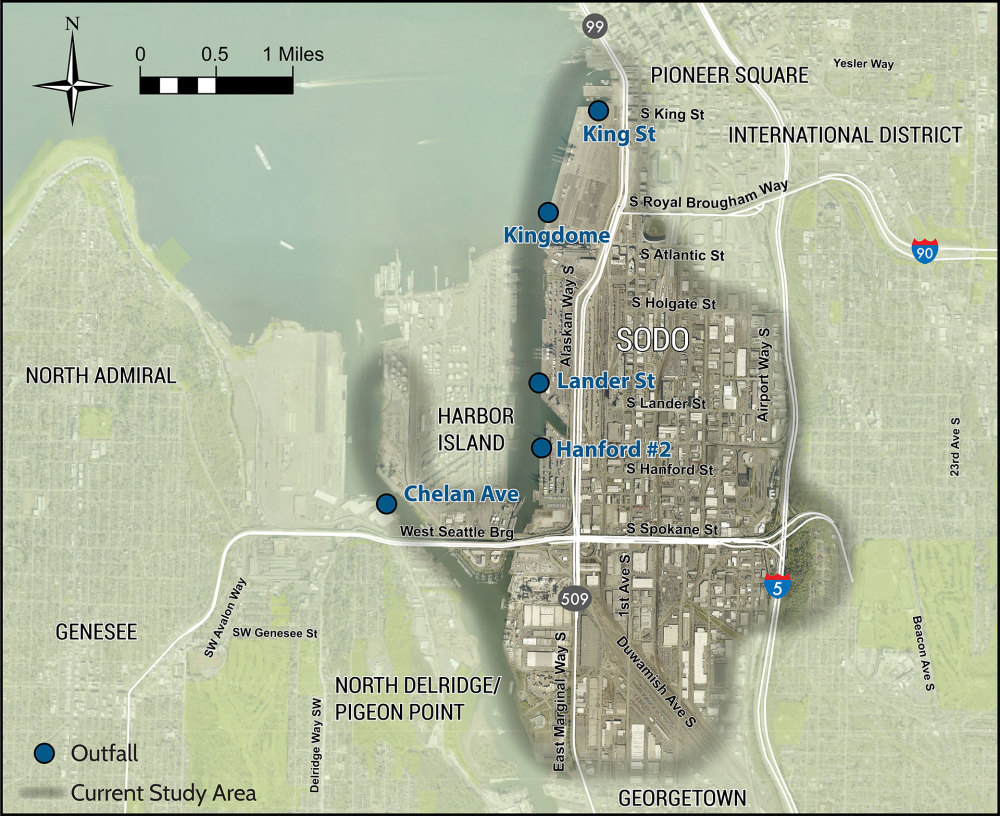
Most of King County has a network of pipes that sends wastewater directly to treatment plants to clean the water. However, in older parts of the system, including areas in Seattle, rainwater flows into the same pipes as wastewater. This is called a combined sewer system.
When heavy rainstorms fill the pipes, Combined Sewer Overflow (CSO) outfalls release stormwater and sewage into local water bodies and act as needed relief points to prevent sewer backups in homes, businesses, and streets. The water released through a CSO outfall typically contains about 90% stormwater and 10% sewage. Today, King County is modernizing a system that’s been in place for more than a century.
The Mouth of Duwamish Wet Weather Facilities will control five CSO outfalls located in the east and west waterways of the Duwamish River on both sides of Harbor Island and along the shoreline of Elliott Bay in SODO.
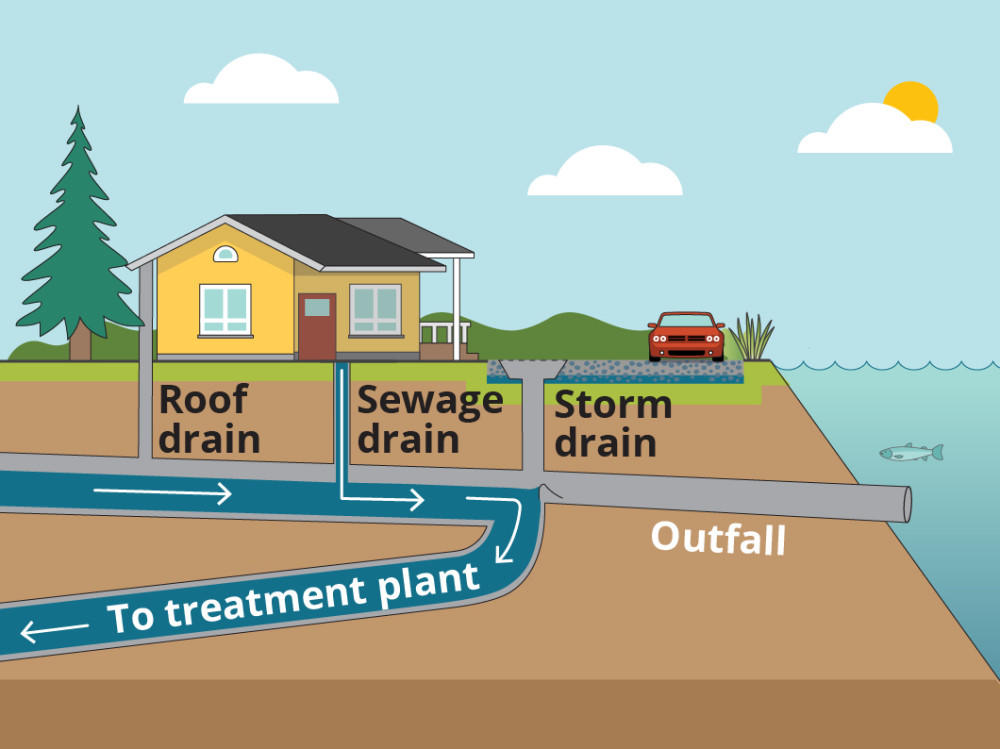
On dry days, wastewater goes directly to a treatment plant to be cleaned.
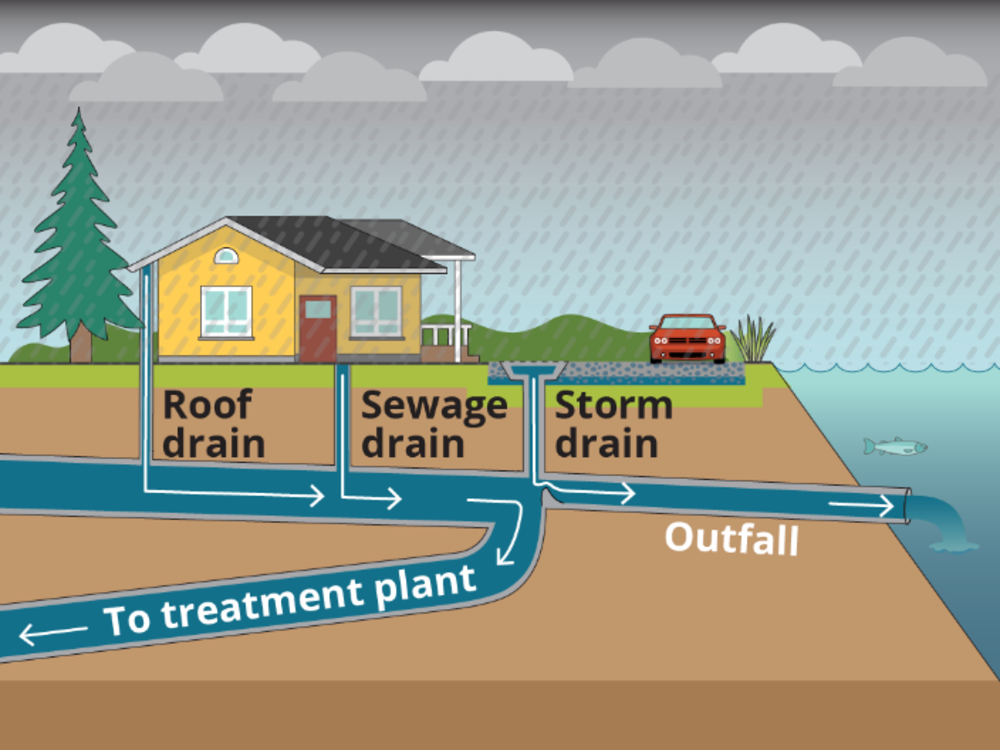
When heavy rainstorms overload pipes with stormwater, the flow is temporarily diverted through a CSO outfall into a local water body. This prevents wastewater backups into homes and businesses.
Doing our part to protect our waters
Since 1979, King County has made great progress in controlling CSO outfalls in Puget Sound and other local water bodies. As of 2023, we have controlled 18 of 38 total CSO outfalls, addressing overflows to reduce pollution into local water bodies. But our work is not done yet. Controlling CSO outfalls at the mouth of the Duwamish River represents a large portion of the remaining CSO outfalls we strive to control.
This project supports King County’s efforts to meet current Washington State Department of Ecology regulations that require no more than one untreated overflow per year on a long-term average. This work fulfills legal requirements including a consent decree with the U.S. Environmental Protection Agency and the Washington State Department of Ecology.
We are dedicated to listening to community needs
King County’s goal is to deliver projects that protect public health and the environment while reflecting neighborhood values and community voices. Since this project began in late 2023, we have reviewed more than 60 community plans and reports across King County and other local jurisdictions to better understand the values of the Duwamish Valley community members.
As we engage with the community, King County is also reaching out to include and collaborate with Tribal Governments in the region and utility partners at the City of Seattle.
King County reviewed over 60 community plans and reports, including the Duwamish Valley Action Plan, the SODO BIA Strategic Plan, the CSO Art Master Plan, the Northwest Ports and Clean Air Strategy, and many more.
Read below to learn which community values we identified in our plan review. We’ll have questions at the end of this section to learn which are most important to you.
Healthy built and natural environments
Healthy built and natural environments are a clear SODO neighborhood priority. This includes green space and trees. According to the SODO Business Improvement Area (SODO BIA) Green Space Plan, SODO is a tree canopy desert, with less than 10% tree coverage. The SODO community wants healthy built and natural environments that fit into the industrial space, provide cooler temperatures, and support a healthier Duwamish River and Puget Sound. More and better access to green gathering places, including public access along the Duwamish River, is a strong community priority.
"The SODO community wants a greener industrial district" - SODO Green Space Plan
Access to safe and efficient transportation
In the past four years, 10% of Seattle’s traffic fatalities have been within a quarter mile of the Fourth Avenue South and South Holgate Street intersection, according to SDOT’s Vision Zero team. Community members want infrastructure that improves access to safe and efficient transportation for people driving, walking, and rolling. Specifically, community members and organizations want better lighting, protected bike lanes, and wayfinding improvements.
"Lots of safety features needed where trucks and pedestrians meet." - Georgetown Open Space Vision Framework
Community and public safety
Public safety is another priority for community members. Community members want improvements to lighting, visibility, bicycle and pedestrian safety, and cleanliness. For example, both the Delridge Neighborhood Snapshot and Georgetown Mobility Study call out lighting and pedestrian safety as key concerns. Some project communities have created task forces and conducted specific safety studies, such as the Georgetown Public Safety Task Force. Community organizations, like the SODO BIA, are working to share safety concerns with elected officials and identify resources to make the neighborhood feel more welcoming for visitors.
"[New infrastructure] should contribute to increased vibrancy, development, and safety of the area." - West Seattle and Ballard Link Extensions Station Planning Progress Report: SODO
Strong, vibrant neighborhoods
SODO is a vibrant mix of industry, businesses, and entertainment, all alongside Seattle’s only river, the Duwamish River. SODO is home to artists’ spaces, public art and murals, stadiums, and music venues. Community members value that the neighborhood supports a business community with living-wage jobs, an artist community, and nightlife. For example, participants in the Pioneer Square Street Concepts Plan cited activity, shops and restaurants, and historic elements as some of their favorite parts of the neighborhood. Participants in the Stadium District Possibilities Snapshot noted ways to provide greater connections across neighborhoods and make the area around the stadiums even more vibrant.
"SODO is a vibrant and diverse business district with a strong industrial presence intermixed with retail, office and service businesses. SODO is also home to a burgeoning entertainment and nightlife scene, with bars, restaurants, clubs and event spaces opening up across the district." - SODO BIA
Family wage jobs and job training
From our work on the Georgetown Wet Weather Treatment Station and the West Duwamish Wet Weather Storage projects to our partnership with the EPA on the Lower Duwamish Waterway Superfund Cleanup, we have heard community members calling for living wage job opportunities in the fields of clean water and sustainability. The Duwamish Valley Action Plan includes Economic Opportunity and Jobs as one of its priority areas with a goal to increase local access to contracting and jobs in the Duwamish Valley. Through this work, we will seek opportunities to provide job trainings, host career fairs and tours, and connect jobseekers to apprenticeship opportunities in their local communities.
"In the Duwamish Valley Vision Map & Report, community members clearly expressed the importance of maintaining the industrial land base while encouraging cleaner industry and increasing opportunities for local jobs. Residents also envision thriving and diverse business districts in proximity to their neighborhoods.” – Duwamish Valley Action Plan
Select your preferred language:
